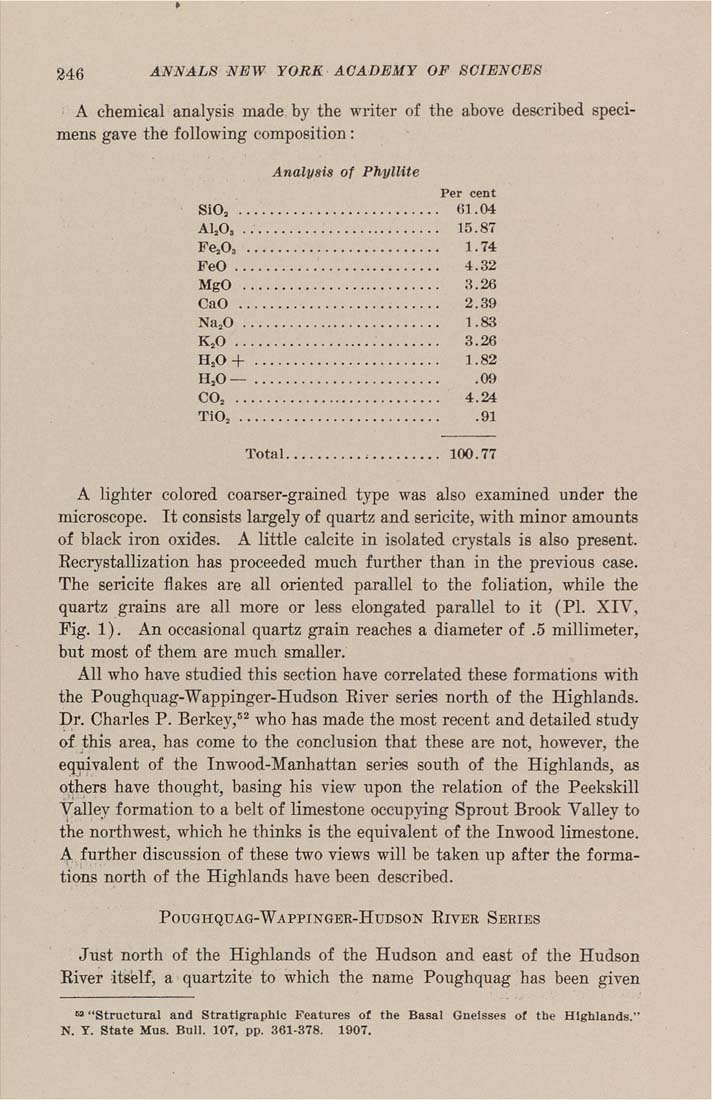346
ANNALS NEW YORK ACADEMY OF SCIENCES
A chemical analysis made by the writer of the above described speci¬
mens gave the following composition :
Analysis of Phyllite
Per cent
SiO, .......................... m.04
AljO,.......................... 15.87
Fe^Oj ......................... 1.74
FeO........................... 4.32
MgO .......................... :i.26
CaO .......................... 2.39
Na,0.......................... 1.83
K^O........................... 3.26
H^O-I- ........................ 1.82
HaO—.........................09
COi ........................... 4.24
TiO,...........................91
Total.................... 100.77
A lighter colored coarser-grained type was also examined under the
microscope. It consists largely of quartz and sericite, with minor amounts
of black iron oxides. A little calcite in isolated crystals is also present.
Recrystallization has proceeded much further than in the previous case.
The sericite flakes are all oriented parallel to the foliation, while the
quartz grains are all more or less elongated parallel to it (PI. XIV,
Fig. 1). An occasional quartz grain reaches a diameter of .5 millimeter,
but most of them are much smaller.
All who have studied this section have correlated these formations with
the Poughquag-Wappinger-Hudson Eiver series north of the Highlands.
Dr. Charles P. Berkey,'^^ who has made the most recent and detailed study
of this area, has come to the conclusion that these are not, however, the
equivalent of the Inwood-Manhattan series south of the Highlands, as
others have thought, basing his view upon the relation of the Peekskill
Valley formation to a belt of limestone occupying Sprout Brook Valley to
the northwest, which he thinks is the equivalent of the Inwood limestone.
A further discussion of these two views will be taken up after the forma¬
tions north of the Highlands have been described.
Poughquag-Wappinger-Hudson River Series
Jnst north of the Highlands of the Hudson and east of the Hudson
River itself, a quartzite to which the name Poughquag has been given
«< "Structural and Stratigraphic Features of the Basal Gneisses of the Highlands."
N. Y. State Mus. Bull. 107, pp. 361-378. 1907.
|








